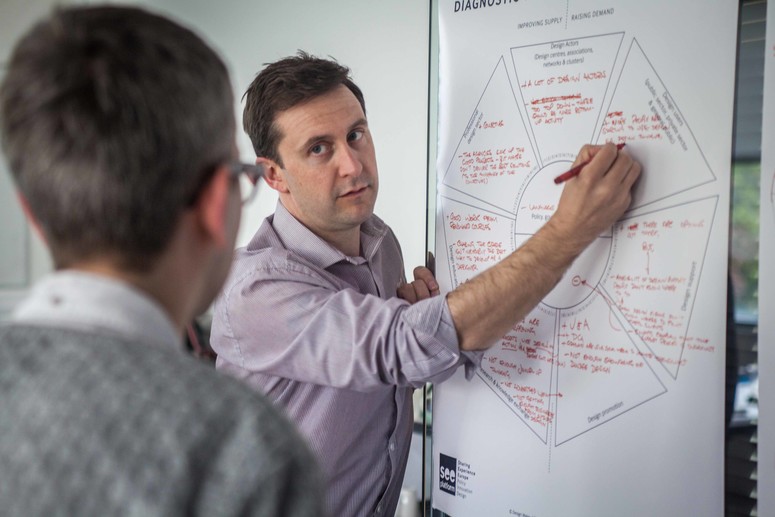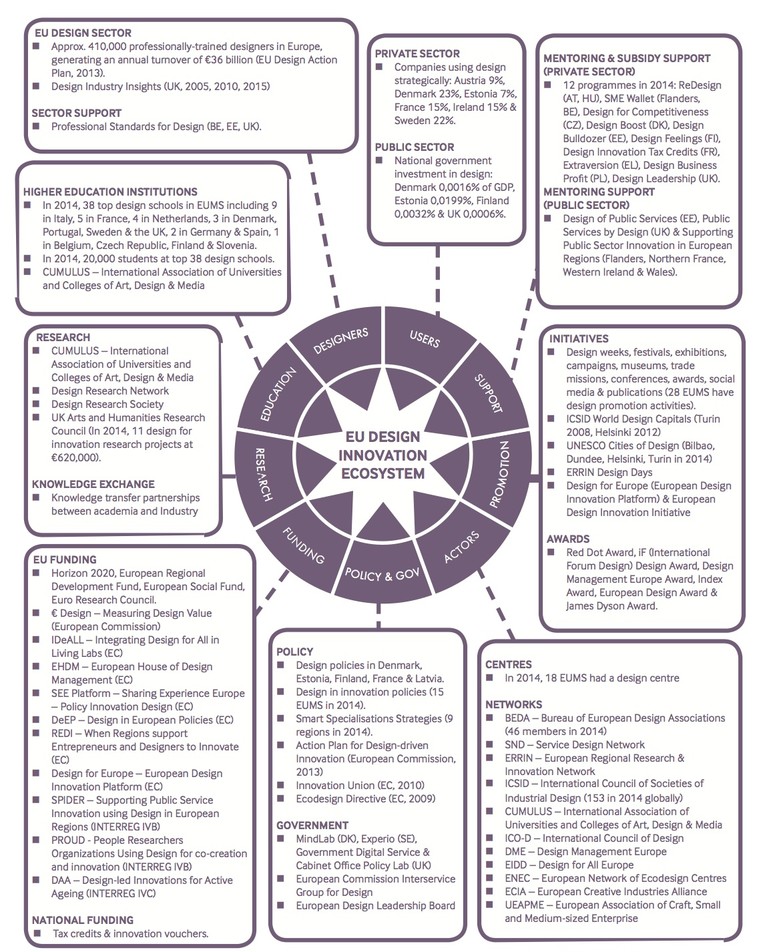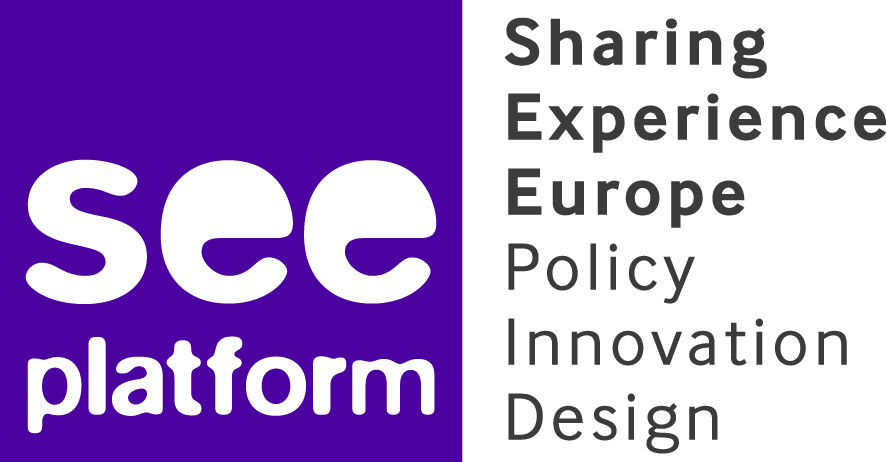Design, Innovation and Policy ? predicting design-driven innovations across Europe

05.03.2015 Features
Between 2012 and 2015, SEE is operating as part of the European Commission’s European Design Innovation Initiative (EDII). Through the EDII, the European Commission seeks to embed design for user-centred innovation in government policies and company strategies across the European Union. Led by PDR at Cardiff Metropolitan University and funded by the European Commission, SEE has run 102 interactive workshops involving over 800 policy-makers in using design methods, what has directly influenced 17 policies and 40 design support programmes.
A bank of evidence for governments
Through new research, case-studies and policy recommendations SEE has built a bank of evidence to support governments to integrate design into policy, programmes and their mainstream practice. The SEE Design, Innovation and Policy Conference 2015, which took place on 10 February 2015 in Brussels, provided an opportunity to recap the developments and share the findings on themes of Design Support Programmes, Design in the Public Sector and Design Policy.

Design stakeholders examining their Design Innovation Ecosystems, Scotland, May 2014
Design Action Plans
Since 2010, when design was included in European innovation policy for the first time (through the Innovation Union), the design policy landscape in Europe has transformed.
Design is increasingly being recognised by EU institutions and national governments across Europe as a factor for innovation in small to medium-sized enterprises, the public sector and society. Not only is there an Action Plan for Design-driven Innovation at the European level, but a number of European Member States, including Denmark, Estonia, Finland, France and Latvia, have also developed Design Action Plans.
In addition, 15 of the 28 EUMS have design explicitly included in national innovation policy. Furthermore, regions like Flanders (Belgium), South Bohemia (Czech Republic), Central Finland, Central Macedonia (Greece) and Wales (UK), among others, have integrated design into their innovation policies, while in Lahti (Finland), St Etienne (France), Dublin (Ireland), Katowice (Poland), and Kent, Monmouth and Shropshire (UK), design managers are responsible for innovating public services.
Design is an approach to problem-solving that can be used across the private and public sectors to drive innovation in products, services, society and even policy-making by putting people first.
International Findings
The Design, Innovation and Policy Conference explored the results from five design support programmes: SME Wallet (Flanders), Design for Competitiveness (Czech Republic), Design Bulldozer (Estonia), Design Leadership (UK) and the Service Design Programme (UK).
Among the presentations were success lessons from design projects in the public sector such as the Cabinet Office Policy Lab (UK), Design for Dementia (Ireland) and Design for Public Good (Denmark, Finland and the UK). The Conference also explored the challenges and opportunities for design policy through a roundtable discussion with government representatives from Denmark, Estonia, Finland, France and the European Commission.
A Design Ecosystem that anticipates future policy trends
The , launched during the Conference, presents an overview of the European Design Innovation Ecosystem [figure 1], a policy concept tested during the SEE workshops. It draws on the experiences of SEE to examine future trends in design policies and programmes.
In the build-up to 2020, a number of trends for design driven innovation are anticipated in Europe:
- Policy-makers across Europe will integrate design more holistically within innovation policies as well as smart specialisation strategies and some will develop design action plans.
- Governments will seek to build design capabilities with small and medium-sized enterprises by integrating design as an eligible cost within innovation programmes such as mentoring, subsidy, tax credit and export schemes as well as developing dedicated design support programmes.
- Governments will develop their internal capacities for design-driven innovation by training staff in design methods, employing design managers and establishing multi-disciplinary innovation units such as MindLab in Denmark, the Cabinet Office Policy Lab in the UK and Experio Lab in Sweden.
- Public sector administrators will recognise design as an enabler of innovation in multiple policy domains such health, social, environmental, digital and transport, and will test design methods in pilot projects.
European Design Innovation Ecosystem

figure 1. Mapping stakeholders and initiatives in the European Design Innovation Ecosystem
To find out more about future design policy trends in Europe read the full report: which can also be found in the ico-D Resource Center.
Follow SEE on Twitter: @PDR_DPOLICY
For more information contact:
Anna Whicher
Head of Design Policy at PDR
Cardiff Metropolitan University
awhicher@cardiffmet.ac.uk
About ico-D Resources
Visit ico-D to access important archival documents and reports, including ico-D Best Practices, design policy papers and regional reports from all over the world.

relatedarticles

goodbye! and next steps for colleague and friend alexey lazarev

explorations in ethical design: meditations on equality

RCA launches new programme: MA Digital Direction

Interview | Ermolaev Bureau (Moscow)
